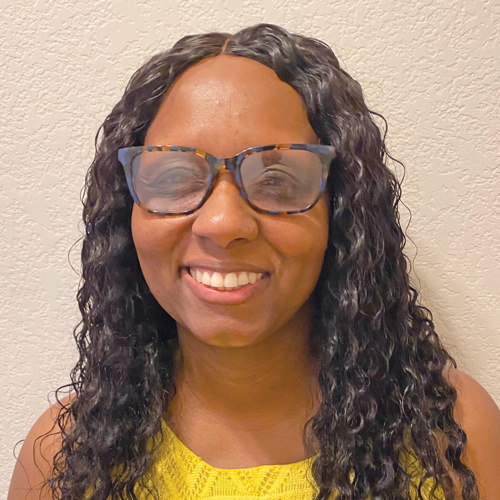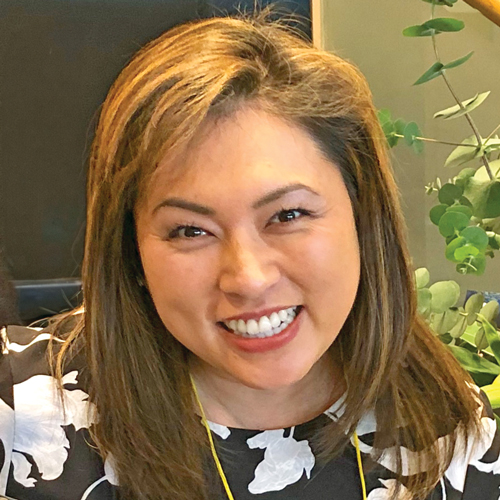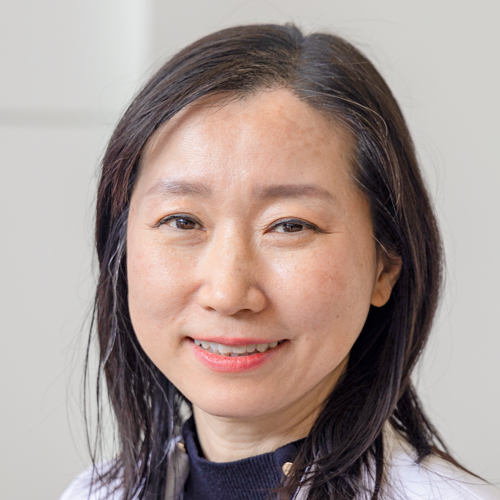by Naoko Leslie
SGI-USA Women’s Leader
Just a month after his inauguration as the second Soka Gakkai president, Josei Toda established the women’s division to initiate the kosen-rufu movement. Seventy-
three years have passed since then (June 10, 1951).
Carrying on his mentor’s determination to rid misery from the face of this planet, Ikeda Sensei continued to encourage and empower the women’s division for our absolute happiness. In February 1990, he delivered a speech at the First SGI-USA Women’s Division Meeting that we now refer to as the “Clear Mirror Guidance,”[1] which has become foundational for the women of the SGI-USA.
We are eternally grateful and know that the greatest way to express our deepest appreciation is for each of us to become the happiest person and introduce this amazing Buddhism to others so they can become happy, too!
Nichiren Daishonin says: “The blessings that Nichiren obtains from propagating the Lotus Sutra will always return to Dozen-bo. How sublime!” (“Flowering and Bearing Grain,” The Writings of Nichiren Daishonin, vol. 1, p. 909).
Both those who plant and receive the seeds of the Mystic Law will gain tremendous benefit, and what a joy that the benefits of expanding happiness will return to our mentor!
In February 2004, Sensei gave this guidance directly to the leaders of the SGI-USA. He said:
It is also very important to communicate the greatness of the Gohonzon to others in a clear, straightforward manner. The benefits of the Gohonzon are absolute and unequivocal. No prayer goes unanswered. When people understand that, the Mystic Law is certain to spread. (My Dear Friends in America, fourth edition, p. 518)
Following this guidance, last year, I introduced my wonderful neighbor to Nam-myoho-renge-kyo. We chanted a few minutes together at my home. I then said to her: “This is the Gohonzon, the happiness manufacturing machine. With it, we can transform anything!” She replied, “How can I get one?”
From that day, we practiced gongyo and studied for the Introduction to Buddhism exam together with her wonderful partner. They joined the SGI with the incredible support of their district family.
The greatest joy came when I seriously chanted that this precious young woman would directly connect to Ikeda Sensei. My prayer was answered when she attended a kosen-rufu gongyo meeting and saw a video of Sensei’s speech. She was moved to tears hearing his encouragement. I believe that this was indicative of her profound connection with her mentor from past lifetimes. It was only a month later that Sensei passed away.
Everyone around us deserves to hear about Nam-myoho-renge-kyo and connect with Sensei and the SGI in this lifetime.
Our mentor encourages us:
Try talking to one person. If it doesn’t go well, try talking to two more people. If that still doesn’t work out, try three, five, ten, and if ten are unfruitful, then try twenty. If twenty doesn’t work out, then try thirty and forty. The point is just to keep sharing Buddhism, with conviction and in high spirits. All those efforts will be transformed into benefit and good fortune, a force for transforming your karma. (The New Human Revolution, vol. 25, p. 112)
Together, as women of the SGI-USA, let’s become the happiest and kick start our summer of propagation with our precious youth so that we can spread joy throughout the land!
Yoko, Kenya, Margaret and Jasmine, what are your experiences of sharing Buddhism?
I was simply reminding them of what they had forgotten.

Yoko Ambulo
Central Territory Women’s Leader
I recall struggling to share the practice in the past because it wasn’t coming from my heart but my head. Trying to intellectually share Buddhism with others was challenging and overwhelming! Through study, though, I began to realize that the Law functions regardless of others’ awareness.
I began sharing Buddhism in a natural way. A natural way for me meant that when I shared about the power of Nam-myoho-renge-kyo, I was simply reminding them of what they had forgotten. I stopped worrying about big terms and definitions and instead spoke to people as though they already knew about the power of chanting and just needed to be reminded.
Recently, I talked about Buddhism with my waitress at dinner. She looked at the Nam-myoho-renge-kyo card and pronounced the words as though reading her favorite passage with no hesitation. She was so appreciative and grateful that I told her about Nam-myoho-renge-kyo and said she’d look more into it. When I share the practice as natural as breathing, I become confident in myself, my mission, my purpose and my vow!
My prayer shifted to encounter people seeking Buddhism.

Kenya Runyan
West Territory Women’s Leader
Getting to a place of joyfully planting seeds has been a journey for me. I used to feel so nervous, and part of me did it not from a place of mission but a sense of obligation.
I used to be very reserved when it came to sharing about my Buddhist practice, so much so that one of my closest friends didn’t discover that I was Buddhist until my wedding day. After she found out, she asked me to take her to a meeting for six months straight
until I finally took her. This is both embarrassing and true.
Fast forward to 2017. Through study and truly wanting to transform my life and reply to Ikeda Sensei, I determined that I would live my vow in every way.
In The New Human Revolution, Sensei says: “First, it’s important to pray wholeheartedly to the Gohonzon to be able to share Nichiren Daishonin’s teachings with others. When you do so, people who are seeking Buddhism will appear in your environment” (vol. 13, revised edition, pp. 156–57).
My prayer shifted to encounter people seeking Buddhism. I also determined that I would be ready to share, leading with my heart. Through this prayer, the joy of connecting life to life with the people around me began to transform me.
My compassion expanded and with it, my determination to plant seeds of Buddhism. Because I work from home, I now create extra reasons to go out to meet people. Wherever I go, to the park, grocery stores and even the doctor’s office, I don’t miss an opportunity to engage.
I have my now growing list of more than 10 friends. I am continuing to foster these friendships as I plant more seeds.
Sharing Buddhism is an integral part of our practice, so if it’s a challenge to introduce others, that’s OK. But it’s important to chant about what is preventing us from sharing the great joy of chanting Nam-myoho-renge-kyo with everyone who we meet.
Sharing Buddhism is about battling my lesser self.

Margaret Kasahara
So-Cal Pacific Territory Women’s Leader
When I was younger, I was overly concerned about how people perceived me, which made me hesitant to share my Buddhist practice, even with some of my friends. As I entered college, I began to feel more comfortable sharing but still battled my hesitancy and self-doubt.
As I started studying more and taking on more leadership within the organization, I realized sharing Buddhism is not about how others react or perceive me. It’s about me battling and not being defeated by my lesser self.
I noticed that there was a direct correlation between introducing others to Buddhism and experiencing personal breakthroughs in my life. And then, on a deeper level, I realized that it was about me fulfilling my vow.
I now do my best to fearlessly share Nam-myoho-renge-kyo with everyone I meet, especially when I am with young women’s division members. I want them to see that we can joyfully and confidently share about our practice, regardless of how others may respond.
I’m also determined to reawaken our sleeping lions! Nichiren Daishonin states, “If one can establish a relationship with even just one phrase of the Wonderful Law, that relationship will continue unbroken over a million kalpas” (The Record of the Orally Transmitted Teachings, p. 219).
In 2019, I introduced a young woman to Buddhism, and she was initially excited. However, she struggled to maintain her practice during the pandemic and eventually stopped. I continue to reach out to her because I have deep conviction that when the time is right, she will reawaken to her mission because of her profound relationship with the “Wonderful Law.” I have deep appreciation for her as she is teaching me how to never give up on anyone!
Sharing Buddhism is about fighting against feelings of hopelessness.

Jasmine Lee.
East Territory Women’s Leader
Shakubuku is not an easy practice. But I’ve always enjoyed doing it.
The first time I realized that it was my mission was around 2018. I was struggling at work and started planting seeds just to win over my life condition. Through those efforts, I met a young woman in the elevator. She attended the 50,000 Lions of Justice Festival, and she eventually received the Gohonzon. So many people were supporting her.
I thought I was introducing her to Buddhism to transform my work karma, but actually, I realized I had this work obstacle so that I could share Buddhism with her. She was my purpose. It became so clear to me.
Then, in the first year of the pandemic, I had so much fear about COVID-19 that I didn’t go out, and I stopped planting seeds. In 2021, I started sharing again, at first just to protect my children. But there was so much going on in America and the world that it became about fighting against feelings of powerlessness and hopelessness.
Since 2021, I’ve shared with many people. No one has received the Gohonzon yet, but I’m not discouraged by that. Right now, I chant and study weekly with a young woman and young man whom I’ve introduced. They have incredible seeking spirits. Now, I’m not swayed by whether the people I share Buddhism with start practicing right away because I regard this as the purpose of my life. I feel genuine joy and happiness regardless—this is why I was born into this world.
From the June 2024 Living Buddhism
References
- See “Buddhism Is a Clear Mirror That Reflects Our Lives,” My Dear Friends in America, fourth edition, pp. 95–106. ↩︎
You are reading {{ meterCount }} of {{ meterMax }} free premium articles

